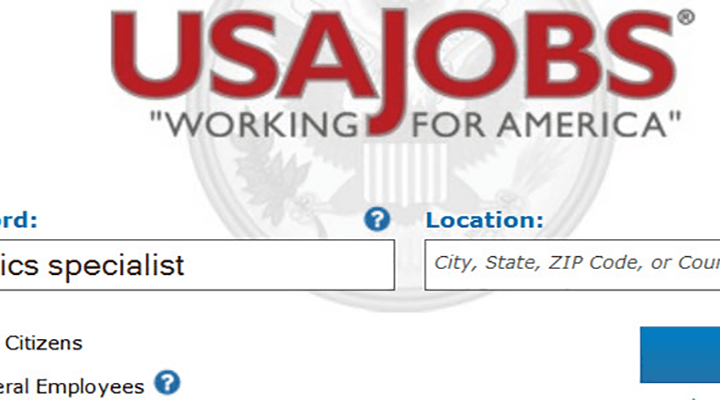The last couple of days, we took a broad look at the open-source job-hunt intelligence you can gather from the Federal Employment Viewpoint Survey, or FEVS. Remember, the FEVS can help you target some great places to work in the Federal Government. FEVS a particularly valuable resources if you’re one of the Baby Boomers or Generation X’ers looking for a place where you might thrive. And remember, it’s not all about Washington, D.C. Some 85 percent of Federal jobs are somewhere else in the United States. Now, let’s take a look at the Fed’s hiring vehicle, USAJobs.
THE FED DOOR
There are several ways to find yourself working for the Federal government, of course. You could win a contract, for instance. Or, you could be one of the thousands of new political appointees who are already starting to descend as the current administration’s political appointees are composing letters of resignation. If you’re looking for something more permanent, USAJobs is one path to federal employment.
Back in 2013 when I used USAJobs to land my first Fed job after leaving the Army, I was happy to find most opportunities in one place (the Intelligence Agencies are notorious for using more independent recruiting processes and avoiding USAJobs altogether. You can also find some federal job opportunities on sites like ClearanceJobs.com).
But the resume-building process was disappointing, and the hiring experience was even more so. Naturally, the application process is appropriately competitive, but once the decision was made to hire, it took months for the human resources office to actually let me in the door.
EVOLUTION of usajobs
Originally coming to the web about two decades ago, the Office of Personnel Management (OPM) has evolved to bring the system deeper into the 21st century. Until 1996, applying for Fed jobs was strictly paper. In 1996, USAJobs made its debut, and back then just moving to an electronic application was a big deal. Another big deal was some sort of one-stop shopping for government jobs, but it was really little more than a bulletin board that, eventually, offered a resume tool. USAJobs resumes are as bureaucratic looking and feeling as you’d expect of, well, a bureaucracy. Over the decades, OPM continued to incrementally upgrade USAJobs with new apps and features. Now, USAJobs has taken an evolutionary leap.
GOOD NEWS
FedScoop’s Billy Mitchell describes USAJobs’ evolution as “the most sweeping update . . . since first moving the hiring process online about 20 years ago.” Notice, Mitchell doesn’t call the update a transformation, and that’s probably good, since the changes probably aren’t transformative (and since that word’s used way too often and imprecisely). However, Mitchell indicates that the new USAJobs is “using machine learning and algorithm technologies,” and that sounds significant.
According to Program Manager Michelle Early, USAJobs is working to “provide relevant tools and resources to support job seekers in their quest for employment.” Early writes that the USAJobs team “is leveraging data to its fullest potential to inform iterative design efforts that will result in connecting talented individuals to the right jobs.” Early explains that the site’s not about jobs, but careers.
Now, USAJobs has a genuine mobile app, a new application process, a new help center, among other features. The site manages 11 million accounts, and even more resumes, and supports over a billion searches annually across some 14,000 government jobs posted there. According to the site itself, USAJobs is “an exploration site that makes applying for a job and tracking the status of your applications simpler and more intuitive.”
It sounds very good. I haven’t test-driven the new site, but I’m about to, and I’m looking forward to a significantly different experience than I had just three years ago. If you have tried it, shoot out a Tweet with hashtag #TheNewUSAJobs and share your experiences.




